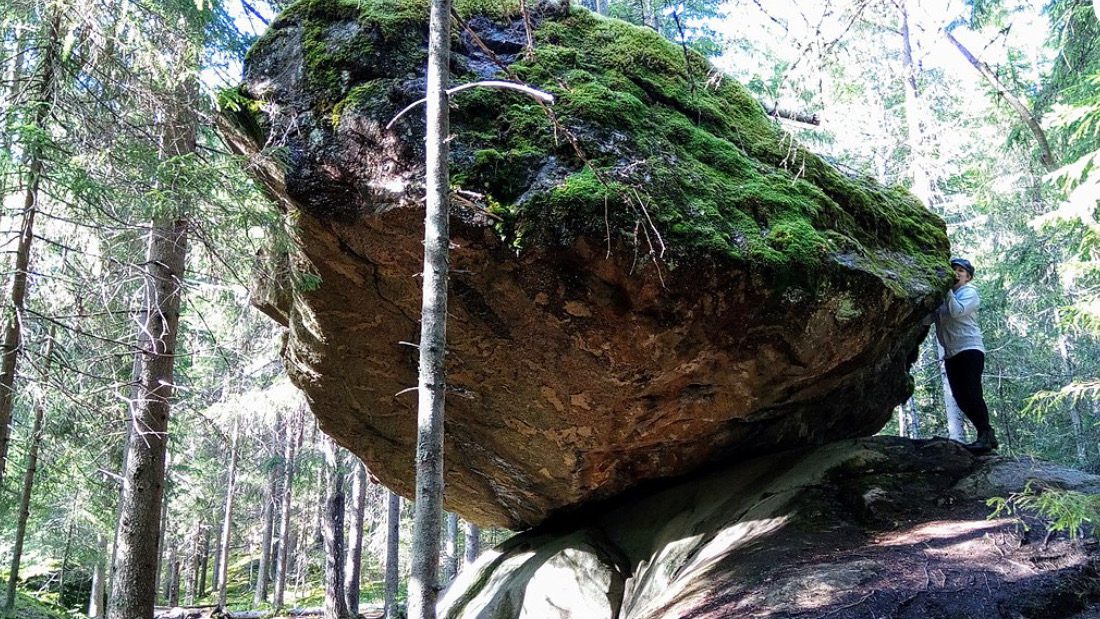Scientists love a good rock formation – just ask geologists. From the bizarre crack of Al Naslaa to the hoodoos that haunt Bryce Canyon National Park, they can’t get enough. But there’s nothing quite like a good balancing rock. Today, our favorite is Kummakivi.
The giant boulder known locally as the “strange stone” can be found in Ruokolahti in southeastern Finland. As the scale schnauzer in the image above shows, it’s an absolute unit.
What makes the peculiar placement of the humongous rock so interesting is that despite its massive size and gargantuan weight, it’s solid as a rock, literally. People have tried and failed to topple Kummakivi, and why would you want to? The Strange Stone would become a mere boulder.
Giants were once credited with plonking Kummakivi where it stands today, and it’s fair to say they would be needed. That is, were it not for glaciers.

One explanation as to how the Kummakivi got to be so perfectly balanced leans on geology and the way that glaciers can shuffle giant objects across vast landscapes, eventually laying them to rest on the ground. Sometimes, that ground is a peculiar place to land but the position endures because, by chance, it’s perfectly balanced. This region of Finland was once covered by a glacier that receded around 8,000 years ago, leaving in its wake an impressive balancing act.
Rocky combos like Kummakivi are known as PBRs, or “precariously balanced rocks”. They’re an area of study for geologists with magnificent examples to be found across the globe. According to Atlas Obscura, PBRs are also known as “reverse seismometers” because their very existence shows that the area isn’t one vulnerable to earthquakes – if it were, those PBRs would’ve toppled long ago.
PBRs sit alongside hoodoos as varieties of “fragile geologic features” that would’ve long been lost to Earth if they didn’t exist in such stable locations. Mushrooming hoodoos differ from PBRs in that although they are seemingly off-balance, with their giant heads sitting atop slender bodies, they’re a singular unit rather than one thing balanced on top of another.
By contrast, the levitating halves of Al Naslaa are thought to indicate that the ginormous rocky duo may sit on a fault line that cleaved the perfectly matched pieces in two as the Earth shifted. Alternatively, it may have been caused by the freeze-thaw effect that broke apart rocks to create Bryce Canyon’s hundreds of hoodoos (which you can learn all about on page 16 of CURIOUS, our free e-magazine).
All of these magnificent creations born of the elements just go to show that geology isn’t just about rocks – it’s about interpreting natural and perplexing indicators of our planet’s geologic history (and rocks).
Source Link: A Peculiar Natural Phenomenon Created The Kummakivi Rock Formation